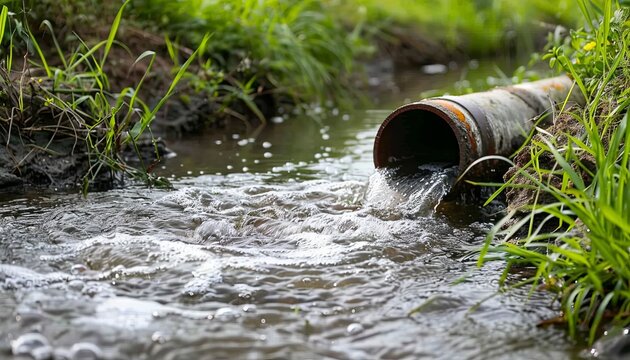Protecting Against Burst Pipeline: Essential Tips to Secure Your Plumbing
Avoiding burst pipelines is a critical problem for house owners, specifically during cooler months when the danger of cold is increased. Carrying out calculated procedures such as appropriate insulation, routine inspections, and maintaining regular indoor temperatures can dramatically reduce the chance of pipeline failure.
Understand Pipeline Vulnerabilities
Understanding pipe susceptabilities is necessary for effective plumbing maintenance and preventing expensive damage. Numerous factors add to the vulnerability of pipes to bursts, consisting of material composition, age, and ecological conditions. Older pipelines, particularly those made from galvanized steel or polybutylene, frequently deteriorate in time, leading to boosted risk of tears and leakages.
Temperature level fluctuations can additionally significantly impact pipe honesty. In colder climates, water trapped in pipes can freeze, expanding and applying stress on the pipe wall surfaces, which may eventually cause a ruptured. Furthermore, high water stress can stress pipes, specifically at bends and joints, heightening the probability of failing.

Insulate Piping Properly
Proper insulation of pipes is critical for preventing freezing and subsequent ruptureds throughout cold weather condition (burst pipe). Shielding your plumbing system efficiently safeguards against temperature level goes down that can cause expensive damages. Begin by recognizing prone locations where pipelines are revealed to outdoor temperature levels, such as cellars, attics, and exterior walls
Use foam pipe insulation sleeves or wrap insulation tape around these areas to offer a protective barrier. Guarantee that all sections of the pipes, specifically those with restricted warm exposure, get sufficient insulation. Pay special attention to fittings and joints, as these are extra at risk to cold.
When shielding, it's crucial to pick products that satisfy neighborhood building ordinance and are proper for the details setting. Fiberglass insulation is usually advised for its thermal resistance residential properties. Furthermore, consider using warmth cords or tape in extreme problems, which can be connected in to offer supplemental warmth
Consistently examine insulated pipelines for any indications of wear or damage, as compromised insulation can diminish its performance. By taking these positive actions, you substantially reduce the threat of pipe ruptureds, making certain a dependable pipes system throughout the cold weather.
Maintain Consistent Temperature
A secure indoor temperature level is important for preventing ruptured pipes during the icy months. When temperatures decrease, water within pipes can freeze, developing and expanding stress that may inevitably cause the pipes to ruptured. To minimize this risk, home owners need to keep a consistent temperature throughout their home, ideally no less than 55 ° F(13 ° C)Utilizing a programmable thermostat can assist take care of indoor temperatures properly, ensuring that rooms with pipes continue to be warm even when your house is empty. Pay unique focus to areas that are a lot more vulnerable to cool, such as basements, attics, and garages. Maintaining closet doors open under sinks can also enable warmer air from the home to distribute around pipes.
This small flow of water can protect against freezing by reducing pressure within the pipes. By implementing these methods, property owners can significantly lower the risk of pipeline bursts and guard their pipes systems against the extreme winter season components.
Consistently Evaluate Pipes
Normal assessments of plumbing systems are vital for protecting against ruptured pipes and preserving total home stability. Regular checks enable homeowners to identify possible problems prior to they intensify right into expensive repairs or significant water damage. During these inspections, it is important to check out noticeable pipes for signs of deterioration, leakages, or wear. Pay unique interest to locations prone to cold, such as basements, attics, and exterior wall surfaces.
Furthermore, inspecting links and joints is vital, as these points are usually prone to leaks. Homeowners should also analyze water stress levels, as excessive pressure can strain the pipes system and raise the risk of pipeline bursts.
Take into consideration organizing professional plumbing inspections at least when a year, especially prior to winter, to ensure your system is prepared for colder temperature levels. By being positive in your approach, you can safeguard your home against the disruptive and expensive consequences of ruptured pipelines.
Know Emergency Procedures
Recognizing emergency procedures is important for every homeowner, specifically after conducting regular plumbing assessments. Being prepared for a plumbing emergency can substantially alleviate damages and conserve prices.
Following, keep essential devices convenient. you could try these out A plumbing emergency situation set ought to consist of a wrench, plunger, and towels, along with a flashlight and a bucket for little leakages. Additionally, take into consideration having the call information for a trusted plumbing professional conveniently available, ought to the circumstance rise beyond your control.
If you discover a leakage or ruptured pipeline, instantly shut off the supply of water and alert your plumbing professional. Record the damages with pictures for insurance policy functions. Be mindful of the indicators of possible pipes issues, such as uncommon water pressure fluctuations or damp spots on walls
Eventually, positive knowledge and swift action are crucial in managing pipes emergency situations, guaranteeing your home continues to be safeguarded and lessening prospective damage.

Verdict
In final thought, avoiding ruptured pipelines requires a multifaceted strategy that consists of understanding pipe susceptabilities, proper insulation, preserving constant indoor temperature levels, regular evaluations, and understanding of emergency treatments. By implementing these necessary strategies, the threat of pipes failings can be significantly decreased, therefore making certain the longevity and efficiency of the find more info plumbing system. Positive measures not only safeguard against prospective damages yet also add to overall water conservation and the security of building.
In colder climates, water caught in pipelines can freeze, increasing and putting in stress on the pipeline walls, which might eventually lead to a burst. When temperatures decrease, water within pipes can freeze, expanding and creating stress that might you can find out more inevitably cause the pipelines to burst. By carrying out these approaches, homeowners can significantly minimize the risk of pipeline bursts and safeguard their pipes systems against the extreme wintertime elements.
